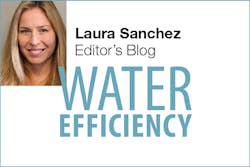Before we close the books on 2017, we thought that it would be interesting to revisit some of Water Efficiency’s top posts for the year.
This blog post received more comments than any other Water Efficiency post published in 2017.
Unprecedented Charges in Flint
While I feel a tremendous sense of responsibility to do my job well and report information accurately in my role as editor, when I mess up or fail to act, a comma is misplaced or a person’s name misspelled. It’s unfortunate, but nobody dies.
Click here to continue reading: Unprecedented Charges in Flint
Our two most read and shared stories from Water Efficiency in 2017 were:
Maintaining an Underground Potable Water Tank
Detecting and repairing leaks may be the most cost-effective way to conserve water in an underground water tank. Unnoticed leaks are costly occurrences in underground water tanks, and many may only be found when they become visible at the surface, or when a collapse occurs. However, leaks detected and repaired early may only incur minor costs. Click here to continue reading: Maintaining an Underground Potable Water Tank
Project Profile: San Antonio’s Vista Ridge Pipeline
A look at one of the water sector’s largest public-private partnerships
A $927 million construction of a 140-mile pipeline slated to begin this year for the San Antonio Water System (SAWS) in Texas is believed to be one of the water sector’s largest-scale public-private partnerships (P3), notes Ginger Elbaum, director of operations for E3 Consulting (E3).
The project symbolizes a growing trend toward the use of P3s in addressing the nation’s infrastructure challenges.
Click here to continue reading: Project Profile: San Antonio’s Vista Ridge Pipeline
